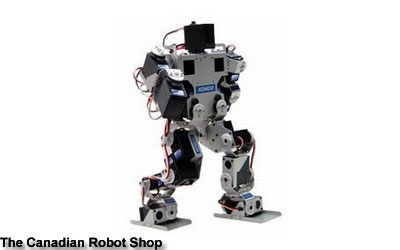U.S. Losing Robotics Edge

This Friday more than a dozen robots will get together to spend the day hopping, walking, rolling and flying.
Think of it as a robot carnival. The National Science Foundation invited the automatons and their creators to an exhibition intended to showcase the best advanced robotics technology the U.S. has to offer.
The exhibition in Arlington, VA was planned as a release party for findings from a two-year study evaluating robotics research and development in the United States, Japan, Korea, and Western Europe.
The U.S. leads the way in areas such as robot-assisted surgery and mobile space robots, but is losing ground in other fields. The U.S. once dominated in the development of robots designed for service and industry, but now other countries are catching up and even passing the old golden standard.
The study covered six categories of robotics: robotic vehicles, space robotics, humanoid robots, networked robots, robotics in biology and medicine, and industrial, service, and personal robots.
For the new study, six robotics experts inspected more than 50 research facilities worldwide and wrote up the report. The work was funded by the National Science Foundation, NASA, and the National Institutes of Health.
The federal Bureau of Industry and Security has already recognized the United States' slipping lead in a key area of robotics: artificial intelligence (AI).
Get the world’s most fascinating discoveries delivered straight to your inbox.
"The United States leadership position in AI is eroding as the governments and companies in Japan, and as well as in Western European, working together, have gained ground," the agency states on its web site. "In select areas of AI, Japan and Western Europe now surpass the U.S."
Here’s a sampling of the attendees at Friday's gathering:
- A six-legged bug bot that’s one of the most speedy and mobile robots around.
- A robotic brain surgeon that can deal with an aneurysm or drill a hole in your skull.
- A soda-can sized robot that speeds around on two wheels taking video of everything it sees.
- A humanoid robot head that can learn facial gestures and look at things it finds interesting.
- A full-size replica of a Mars Exploration Rover.
The demonstrations, including opportunities for visitors to control some of the robots, will be at the National Science Foundation and are open to the public from 2:30 - 5:00 p.m. [Directions].
More Cool Robots
- New Robots Walk Like Humans
- New E-Skin Lets Robots Feel
- Real Robot Modeled after 'Terminator'
- Big Dog Robot Now in Puppy Stage
- Friendly House-sitting Robot Coming to Stores Soon
- Sega's idog -- The Friendly Robot Puppy
Galleries
Carnival of Robots
Real Robots: VOTE for Your Favorite




